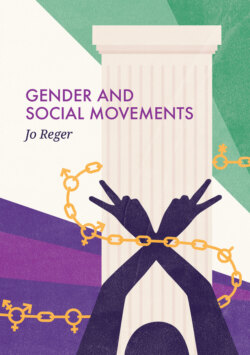Читать книгу Gender and Social Movements - Jo Reger - Страница 14
Studying social change
ОглавлениеStudying the relationship between gender and social movements is also an investigation of how social change occurs. When social movements focus on gendered issues, such as the men’s rights movement discussed in Chapter 1, gender norms and societal understandings of gender can shift. However, shifts in society, such as in the economy and labor market as well as social disruptions of war or global pandemics, can alter gender norms and spur social movement activism. For example, many African women’s movements started out as peace and anti-war movements and became gender-focused movements (Tripp 2017). Here we can see how the end of the wars often brought social reorganization and a call by activists for reforming society. In the course of pressing for reforms, women peace activists also experienced political openings that “helped foster new women’s activism, which sped up processes of women’s rights reform” (Tripp 2017: 46). There is a consistent pattern across time and place in which movements focused on non-gendered issues give birth to gender-focused movements.
Focusing on gender inequality and dynamics of social change leads us back to the example of the #MeToo movement. Gender norms and expectations, particularly around expressions of sexuality and expectations, can result in the identification of a problem, such as sexual harassment and assault, that spreads through society. Understanding these problems as more than individual issues but as inequality embedded in societal norms can lead to the formation of a social movement. This problem, or as social movement scholars call it a “grievance,” is articulated by social movement participants, diffuses into society and is embedded in activist networks. Sparked by an event, such as the highly publicized case of Harvey Weinstein, experiences are reexamined, stories are told, activists are organized, and a societal shift begins. In sum, in the #MeToo movement, a societal issue moves from being an accepted norm to a social problem and then a grievance articulated through a social movement. Through sustained attention by activists, combined with shifting social attitudes, we see that though the emergence of #MeToo can appear spontaneous and somewhat puzzling, it is instead an outcome of a movement that drew on and redefined what it means to experience sexual assault and harassment through an analysis of gender. In all, combining gender and social movements provides us with a lens to understand the world around us.
